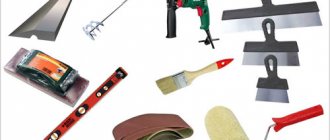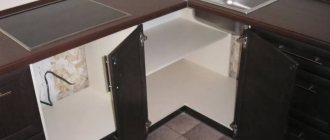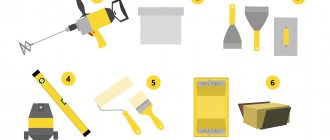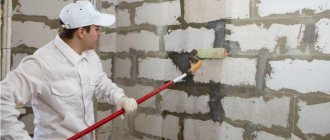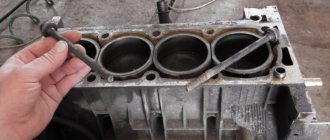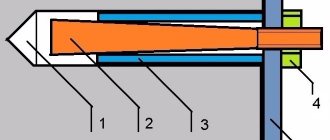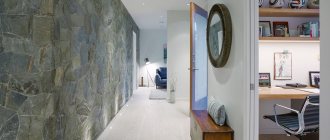On trading floors, decorative elements for finishing are presented in a large assortment. Let's look at what wall moldings are, how and where they can be used, and what design options exist. Let's take a look at the general recommendations from designers. After reading the article, you will be able to independently understand the variety of finished products and make the right choice for decorating a particular space.
Wall molding Source salon-baget.ua
Types of baguette
Thanks to modern technologies in production, the possibilities of using baguettes are expanding. Nowadays, polyurethane molding is difficult to distinguish from plaster stucco molding of the Baroque era, the unreal shine of the aluminum profile evokes thoughts of spaceships, and lightweight plastic plinths imitate richly gilded frames.
The planks are made from wood, plastic, and aluminum. Each material has features that should be taken into account when planning the design of ceilings and walls.
A wooden baguette is a traditional and understandable solution. The best material for framing pictures has not yet been invented. Especially if the frames are made by hand and contain the positive energy of the master. Unfortunately, for mass production this is a complex, capricious material to process and store. Although its use is justified in country and Provence style interiors.
Gypsum baguettes fit perfectly into interiors in a classic style or luxurious baroque. They emphasize the respectability and solidity of the house. It is difficult to work with plaster; it is fragile, heavy, and afraid of moisture. Therefore, consumers increasingly prefer the use of decor made of polyurethane and plastic.
Polyurethane moldings are quite light, flexible and durable. Therefore, in addition to walls and ceilings, they are used in the design of curved structures. Due to their light weight, they can be glued only from one edge, for example, to the wall when installing suspended ceilings and lighting cornices. Manufacturers are constantly releasing new collections, expanding their range, and trying to keep up with fashion trends.
Related article: Wall decoration: stencils, stickers, drapery
Plastic baguettes are used in the interior when installing suspended ceilings and plasterboard structures. Externally, they look like skirting boards with grooves for locks, most often white. There is a decorative baguette on sale that imitates the pattern of wood or marble. Having the skills to work with paints, you can apply a pattern or paint the baseboards yourself.
Aluminum profiles are used in the construction of suspended ceilings. The planks bend easily and follow the contours of a curved structure. The possibilities for using aluminum are quite varied. For example, in high-tech style, metallic gloss serves as a worthy frame for a poster, mirror, or photograph.
Be careful: foam baguettes are cheap and easy to use. But don’t be fooled by their pretty appearance, because the material tends to crumble and the work will look cheap and untidy.
To summarize, we note: the most natural baguette is made of wood and plaster, the most durable is made of aluminum, the cheapest is made of foam plastic.
How to make a frame from wallpaper with your own hands
If there is any unused wallpaper left after the renovation, do not rush to throw it away. This detail can also be used if you include imagination and a little creativity.
Wallpaper history
In the first millennium BC, the first analogues of modern wallpaper appeared in the territory inhabited by the ancient Assyrians. For a long time, such products were black and white, and only in the 11th century AD technologies appeared that made it possible to make them color.
Paper wallpaper was first made by the ancient Chinese, who kept the method of its production a secret. It is only known that the material for them was rice paper. In the 6th century AD, Japan came up with its own technology for making wallpaper. It reached European states only in the 8th century.
Despite the novelty of the invention, the quality and durability of woven wallpaper was far superior to its paper counterpart. In addition, they had a high cost, as they were decorated manually. After some time, the Englishman Tsaner invented a method of making wallpaper using silk threads. Already in the 14th century, a wooden stamp appeared, which began to apply patterns to the surface of the product.
Additional options for using leftover wallpaper
Before considering the actual creation of frames, it is worth dwelling a little on alternatives to this use of material. For example, you can come up with various interior details or transform pieces of furniture. Some ideas for application:
- Pasting the back surfaces of shelving, hanging shelves or open cabinets. A solution with a pattern in the form of a decorative lattice looks great. This way it is easy to change the appearance of furniture with minimal effort, in addition, it is a very cheap and easy to implement option. If you want to add bright accents, you can use several different colors or types of paper, this design will be much more expressive.
- If desired, you can decorate the outer surfaces of furniture and interior items. In this case, all that remains is to ensure that the design is combined with the overall style of the room. To give an original look to a dressing table or coffee table, wallpaper is laid on the surface and covered with glass. This makes it easy to change the design of the furniture.
- Create interesting accents on your walls with framed wallpaper. Here there is room for imagination - to decorate the surface with frames of different sizes, but of the same tone, or to use different color compositions for maximum expressiveness of the decor. For those who love creativity, you can try to design the frame yourself. To do this, use a baguette, which can be purchased at any hardware store.
- If you cover cardboard or plywood with paper wallpaper, you will get an original handmade panel. There may be several of them from different types of paper, or products of the same color can be made. If one of the walls in the room is covered with wallpaper, an unusual accent made of the same coating will look beautiful on the opposite surface.
Interior in English style Source archidom.ru
Ceiling decoration
The ceiling molding has a double task: on the one hand, it masks the seam between the wall and the ceiling, on the other hand, it is a decorative element and decorates the room. Installing it is simple. For installation, a special glue is used, which is applied to the baguette and the wall surface to be pasted. For the convenience of consumers, corner models are produced so that you don’t have to think about how to cut the corner correctly.
A modern solution: a ceiling plinth with a thickened lower part and a special groove is glued at a distance of 20 cm from the ceiling. An LED strip is placed on top along the perimeter of the walls. An interesting ceiling lighting effect is created.
How to install molding
There are special construction rules for fixing baguettes and other home decoration elements. They should be followed so that the final result is a correct and beautiful decoration using a frame or molding. To glue structures, you need to use special compounds; you can also use liquid nails. Before installation, it is recommended to keep the planks for a day inside the room in which they will be installed. This is necessary to adapt the material to the existing microclimate of the room.
Hallway walls with photo wallpaper Source otdelka-expert.ru
Installation must be carried out in the following sequence of work:
- Thorough plastering and priming of the wall panel;
- Applying markings in areas of subsequent fixation of elements;
- Treatment of parts with mounting adhesive solution;
- The elements are secured starting from the corners;
- Checking the symmetry of the frames and the strength of fixation of the parts;
- You can then leave the surface for the glue to dry. This will take about 6 hours.
- Puttying cracks and cracks between the plank and the wall or ceiling;
- Clean off excess putty using sandpaper.
Wall design
In the design of walls, baguette has many faces and is varied. It highlights a specific place on the wall and attracts the attention of viewers. For example, a collage of family photos or an antique cuckoo clock.
In another case, it zones the space, smoothes out the boundaries between wallpapers of different designs. The joint becomes invisible, and the space becomes more harmonious.
Related article: How to decorate a balcony with flowers with your own hands (60 photos)
You can install a contrasting baguette around the perimeter of the niche. This design will draw attention to the object. To make the niche look mysterious and romantic, frame its inside, add lighting, and complete the composition with a light, elegant curtain.
You won’t surprise anyone with paintings and posters on the walls. The designers went further, removed the paintings, leaving only the frame. Here it is, the highlight: the baguette in the interior acts as a frame. It is often made from expensive, refined materials. Depending on the style of the room, baguettes made of wood, polyurethane, plaster or aluminum act as frames on the wall.
Advice! Two or three A3 size frames located at a distance of 15-20 cm from each other will look harmonious on the wall.
Installation features
The choice of installation method depends on how the baguette looks relative to the reverse side. There are only three versions: a flat base, an elongated wall part and a short ceiling part, with identical edges for gluing in the corners. The first type is relevant for zoning a room, framing objects or niches from the outside, designing transitions of different materials, patterns, and colors of adjacent wallpaper, for example.
Greater interest today is directed towards the second baguette on the wall. It allows you to visually raise or make the ceiling heavier, and install hidden lighting without additional devices. To do this, it is enough to lower the upper edge at a horizontal level 2 cm lower. That is, the part for gluing to the flow will become a seat for the diode strip.
Backlight on a baguette strip Source 5watt.ua
Framing small elements
Mirrors, paintings, engravings, posters, tapestries, photographs... Everything becomes the object of close attention of the designer. Proper use turns these elements into interior highlights. A decorative baguette gives them a new sound and fits them organically into the space.
Tip: even a simple rectangular mirror will become modern and attractive in a new frame made of baguette. Cut the strips to the required length and glue them around the perimeter. The interior will sparkle with new colors!
How to make a frame from ceiling plinth
To complete this work you will need:
- ceiling plinth made of polystyrene foam;
- universal adhesive base;
- acrylic wood putty;
- well sharpened knife;
- protractor;
- acrylic based paints;
- corrugated cardboard or packaging from household appliances.
The required picture is cut out of paper and glued to the ceiling slab. The latter should exceed the size of the picture by about 1 cm on each side.
Next, work is carried out on the production of frames from corrugated cardboard or ceiling plinth. First, a template for the future product is cut out. A rectangular shape is made from corrugated cardboard, and a hole is made in the center for a photograph or picture. The size of the frame depends on the size of the desired image that will subsequently be contained in it. Then an identical rectangle with a slightly larger window is cut out from the workpiece. Then the elements are glued to each other. The result is a ready-made place for inserting a picture. If you plan to use glass or a stretcher, you will need to make a couple more of the same rectangles with a wider window to glue them to the other side of the frame. The number of products depends on the thickness of the embedded image.
When the base is ready, they begin to decorate the frame with ceiling plinth. Each edge of the baguette is cut at an angle of 45 degrees. Mark the corners and cutting lines on the paper using a protractor, then lay down the strip and make marks on it. Then the 4 elements are cut off using a sharp knife. Next, the baguette is glued to the cardboard blank from the outside. The cracks in the corners are sealed with putty and paint. The work done must be left for some time until the glue completely dries.
Kitchen interior with photo wallpaper Source design-homes.ru
Then you need to putty the areas where the baguette meets the cardboard, as well as the joints at the corners and the back side of the frame. This solution will help strengthen the product and hide all uneven finishes. The ends of the frame are puttied several times, dried, and then each layer is sanded one by one using sandpaper.
The dried putty begins to be painted. It is best to use acrylic compounds or water-based emulsion. To get a milky tone, you can add a small amount of ocher to white paint. For a dark shade, black paint is mixed with red and dark brown. Then the finished product should be treated with water-based varnish.
Lastly, fasten the product. For this purpose, you can use thick twine, from which you cut from 10 to 14 cm. Then take a dense but thin piece of cardboard and cut out a rectangle with sides 5 by 7 cm. The rope is applied to the back side of the frame. After this, glue is applied and the cardboard is glued, which is pressed with a weight until it dries completely. Now the frame for photo wallpaper on the wall is ready, all that remains is to fix it on the mount and enjoy the result of the work done.
The final touch to the design
Finally, a few more recommendations from designers.
- A narrow ceiling molding will visually increase the height of the walls, make the ceiling higher, vertical thin lines will give the room severity, and horizontal ones will add dynamics. Wide options are suitable for large rooms; they will make a small room “heavier” and visually it will seem cramped.
- If you want to choose a baguette with relief, focus on the general style of the interior, color and texture solutions. Remember that white is a universal color; it goes harmoniously with all shades. If you think that the design should be a different color, experiment and paint the baguette before starting work.
- Competently combine style, measure, and imagination in interior design. Then you will not have to regret the time, effort and money spent. The result will please you for many years.
Related article: Wallpaper for walls - creating exclusive decor
Apartment design with baguette (2 videos)
Apartment design options with baguette (43 photos)
How to make a frame
When making a blank, it is important to monitor the dimensions of the frame so that it exactly matches the wallpaper contained inside. To do this, it is important to measure the size of the picture and cut the material according to the data obtained. Do not forget that the painting will be placed inside the product, so all parts must be measured from the inside. It is also important to make the corners correctly so that they are absolutely the same. To do this, use a miter box and set the tilt to 45 degrees.
Decorative frames Source serviceyard.net
The parts are sawed off and then the corners are checked for exact fit. After this, the product can be fixed on the surface. Any method will do - first stick a frame and then add a canvas, or first place a picture and then decorate it with a frame. Focus on your own habits and convenience.
Selection of various profiles
Correctly choosing wallpaper in profile finishing for a separate room is not an easy task. It is important to maintain the correct color scheme of the decor.
It is recommended to combine bright textured wallpapers using moldings of pastel colors, and products made in soothing shades should be combined with a baguette of bright colors.
Large planks create volume to the walls, giving the interior uniqueness. Moldings are made from gypsum and expanded polystyrene. Wooden planks will be a great idea for decorating walls in a room expressed in a classic or country style. They will make the room cozy and warm.
Profiles made of gypsum, plastic, polyurethane
Plaster moldings remain popular. They are spectacular in appearance, consistent with the design of ceiling cornices, and endow the room with artistic completeness of style. The advantage of gypsum products is the ability to acquire any round shape.
Note!
- Glass wallpaper - what is it? Pros and cons, types, features, characteristics, photos of design and combinations in the interior
Plain wallpaper - 150 photos of modern design. Rules for choosing and combining wallpaper in the interior: kitchen, bedroom, living room, hallway
Cork wallpaper for walls: design features, types, photos in the interior, combination options, new designs
Products made of polyurethane and plastic are often used to decorate rooms. They are easy to use, aesthetically pleasing, lightweight, and easy to install.
Polystyrene moldings vary in shape, patterns, and are resistant to humid environments. Easily painted in the desired shade. Plastic slats are perfect for the bathroom, because they are not afraid of moisture and are resistant to steam.
